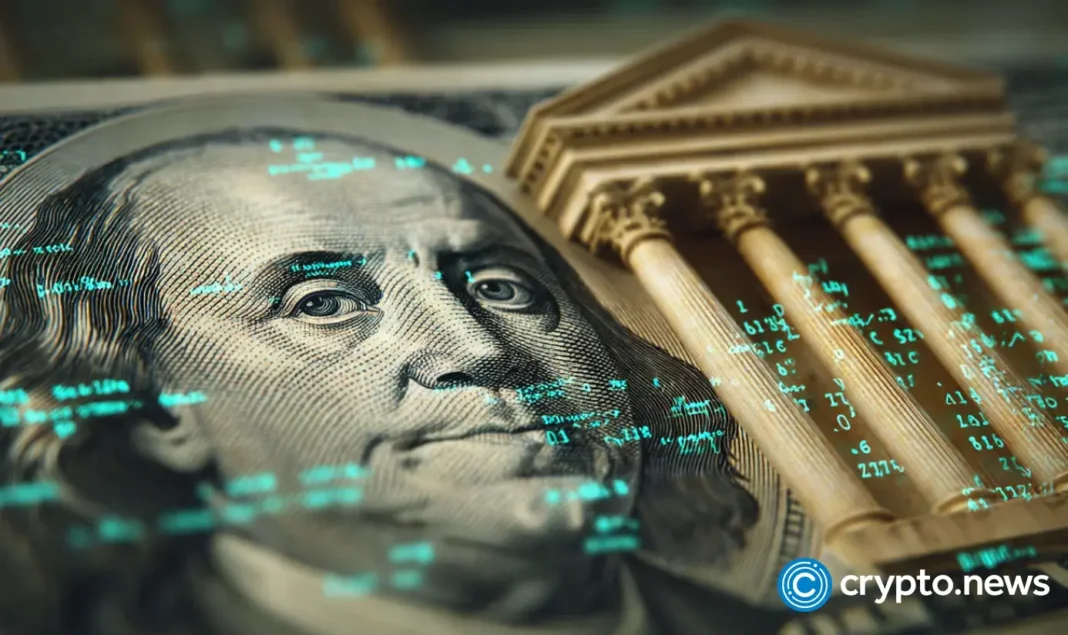Market Pulse
The stablecoin market has officially surpassed an unprecedented $300 billion in total capitalization, marking a pivotal moment in the digital asset landscape. This monumental growth not only signifies the increasing utility and demand for fiat-pegged cryptocurrencies but is also being substantially bolstered by the strategic integration efforts of traditional financial behemoths like Visa and PayPal. The convergence of rapid organic expansion and mainstream institutional adoption is reshaping the future of digital payments and financial infrastructure.
The $300 Billion Threshold: A Testament to Growth
Reaching a $300 billion market cap underscores stablecoins’ evolution from a niche crypto-trading tool to a foundational element of the broader financial ecosystem. This milestone reflects growing confidence among retail and institutional users in stablecoins as a reliable store of value, a medium of exchange, and a crucial bridge between traditional finance and decentralized applications. The consistent demand for stability amidst crypto market volatility, coupled with advancements in regulatory clarity in various jurisdictions, has propelled this remarkable ascent.
- Enhanced Utility: Stablecoins are increasingly used for cross-border remittances, decentralized finance (DeFi) lending and borrowing, and as a hedge against market fluctuations.
- Increased Liquidity: The higher market cap contributes to deeper liquidity pools across exchanges and DeFi protocols, making stablecoins more efficient for large-scale transactions.
- Global Adoption: Their ease of transfer and price stability make them attractive in emerging markets for everyday transactions and inflation hedging.
Visa and PayPal’s Strategic Incursions
The entry and deepened engagement of payment processing giants like Visa and PayPal provide significant validation for the stablecoin sector. These companies are not merely observing; they are actively integrating stablecoins into their vast global networks, aiming to leverage the speed, efficiency, and cost-effectiveness of blockchain technology for a new era of digital commerce. Their involvement is expected to accelerate mainstream adoption by making stablecoins accessible to millions of existing users and merchants.
- Visa’s Network Expansion: Visa has been exploring settlement using stablecoins like USDC on various blockchain networks, aiming to offer faster, more efficient payment rails for businesses. This moves beyond simply allowing crypto purchases to actual native crypto settlement.
- PayPal’s Digital Wallet Integration: PayPal has broadened its crypto offerings to include stablecoin functionalities, allowing users to buy, sell, hold, and, in some regions, even pay with certain stablecoins. This direct access within a familiar platform removes significant barriers for new users.
- Bridging Traditional and Digital: Both companies are strategically positioned to facilitate the seamless conversion between fiat and stablecoins, easing the on-ramp and off-ramp processes that have historically been complex for many users.
Broader Market Implications
This institutional embrace of stablecoins heralds a transformative phase for the entire cryptocurrency market. It signals a maturation beyond speculative trading, emphasizing the practical applications of digital assets in real-world payments and financial services. The increased interoperability between traditional financial systems and blockchain-based assets fostered by these integrations could unlock new economic efficiencies and drive innovation in financial technology, potentially setting a precedent for other legacy financial institutions to follow suit.
Regulatory Landscape and Future Outlook
As the stablecoin market swells and attracts major traditional players, regulatory bodies worldwide are intensifying their focus. The combined pressure of rapid growth and institutional involvement is likely to expedite the development of clearer, more comprehensive regulatory frameworks. While increased oversight may introduce new compliance burdens, it is also expected to foster greater trust and stability, paving the way for even broader adoption and integration into the global financial system. The path forward for stablecoins is one of continued innovation, increasing utility, and evolving regulatory sophistication.
Conclusion
The stablecoin market’s ascent past the $300 billion mark, significantly propelled by the strategic moves of financial powerhouses like Visa and PayPal, underscores a fundamental shift in the global financial paradigm. These developments solidify stablecoins’ role as a crucial component of the digital economy, bridging traditional finance with the efficiencies of blockchain technology. As adoption grows and regulatory clarity emerges, stablecoins are poised to become an indispensable tool for payments, commerce, and financial innovation worldwide.
Pros (Bullish Points)
- Validates increasing real-world utility and adoption of digital assets.
- Attracts more traditional financial institutions and users to the crypto space.
Cons (Bearish Points)
- Increased regulatory scrutiny may follow the rapid growth and institutional involvement.
- Potential for market concentration risks if a few stablecoins dominate too heavily.
Frequently Asked Questions
What are stablecoins?
Stablecoins are cryptocurrencies designed to minimize price volatility, typically by being pegged to a fiat currency like the US dollar, a commodity, or held in reserve.
Why is the $300 billion milestone significant?
It represents a critical point of maturation and mainstream adoption, indicating growing trust and utility for stablecoins in both crypto and traditional financial ecosystems.
How are Visa and PayPal using stablecoins?
They are exploring and integrating stablecoins for various purposes, including facilitating faster cross-border payments, offering crypto payment options to merchants, and enhancing their existing digital payment infrastructure.



